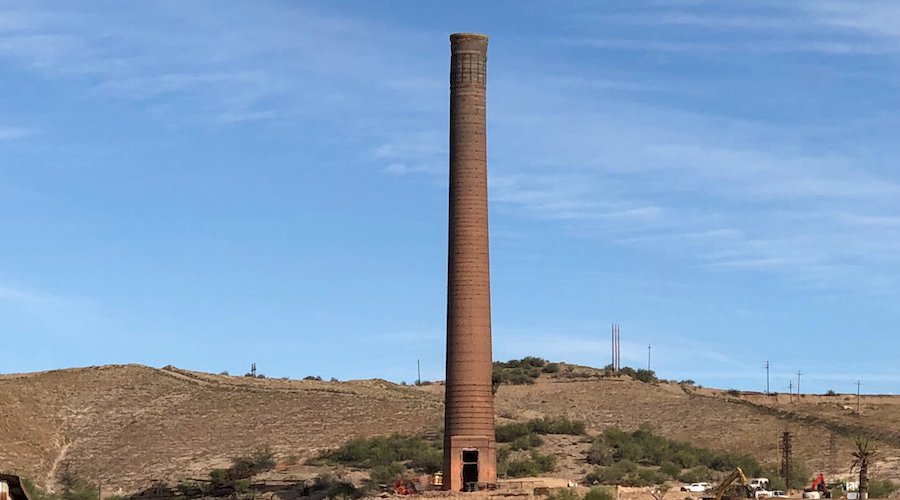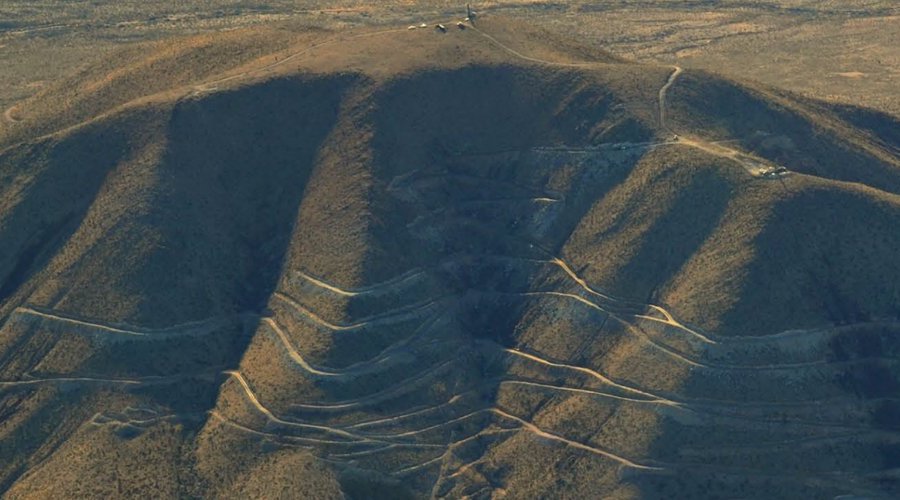Resolution Copper destroys historic smelter in Arizona

Resolution Copper, a joint venture between giants Rio Tinto and BHP, demolished a 94-year-old copper smelter stack that belonged to the Magma Mine, now the Resolution Copper Mine near the Arizonia town of Superior, 60 miles east of downtown Phoenix.
According to the company, the chimney stack was structurally unsound and posed a significant threat to safety. “In addition to proactively addressing the safety threat posed by the crumbling chimney stack, it was also necessary to remove smelter structures in order to clean all contaminants out of the soil that had accumulated during five decades of the Magma Copper Company’s smelting operations, which started in 1924 and ended in 1971,” management said in a statement.
Despite the fact that many community members wanted to preserve the 293-foot tower because they saw it as a symbol of the region’s mining heritage, Resolution considers the crushing of the smelter a major milestone in the broader reclamation of the West Plant property, which began in 2005 and is to be completed in 2020.
Besides this demolition, Resolution also has to clean up the historic mine’s tailings and contamination from the smelter. Some $40 million have been spent on rehabilitation projects so far, including covering up large piles of waste rock near the smelter.
The proposed Resolution Copper Mine, which is believed to host one of the biggest copper deposits in the world, is a project that has consumed already $1.2 billion of Rio’s and BHP’s capital. Its developers plan to tunnel 7,000 feet underground, where rocks radiate heat from the earth’s molten core, and open a crater a mile and a half wide and 1,000 feet deep.
Resolution Copper’s reports state that the mine is capable of producing nearly 25% of the US’ yearly copper demand. The mine is capable of producing 20 million tonnes of copper during its mine life of 40 years. Given the complexity of the project, production is forecasted to start in about 10 years.
More than 50 permits are being processed to be able to kickstart extractive activities at the site. The most urgent one, the Environmental Impact Statement, is expected to be issued by the U.S. Forest Service in May 2019.
The federal government is also carrying out a review of the project, which has drawn about 130,000 comments from concerned constituents, many of them Native American and environmental groups. The Tonto National Forest overlays the copper deposit and some 2,400 acres of it will be off-limits to visitors once the mine is active.
More News
{{ commodity.name }}
{{ post.title }}
{{ post.date }}


Comments